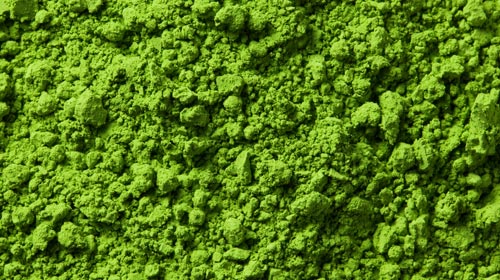What does Sencha taste like and what does it have to do with Matcha?
Sencha is probably Japan's best-known green tea—and also one of its most diverse. Its name translates as "steamed tea," and it's precisely this processing that makes it what it is: fresh, clear, grassy, and structured in flavor.
Unlike fermented teas like black tea, sencha remains enzymatically active through short steaming (通常蒸し). This means that oxidation is stopped immediately after harvest using hot steam – usually within a few hours. This preserves the color, aroma, and constituents, giving sencha its characteristic lightness and depth.
The path from leaf to tea
For high-quality sencha, the tender upper leaves of the Camellia sinensis are harvested. After steaming, the leaves are rolled: In several stages, they are mechanically shaped, drained, and formed into their typical needle shape. This process influences not only the appearance but also the structure of the cell walls—and thus the extraction during infusion.
Rolling "breaks" the leaf structure in a controlled manner. Chloroplasts, cell sap, and essential oils rise to the surface, intensifying the aroma. At the same time, fine cracks are created that allow water to penetrate deeper into the leaf structure during brewing.
Anatomy of the Sencha leaf
A single tea leaf is a highly complex system:
-
The epidermis and subcutaneous tissue protect the inner layers of the body.
-
The palisade tissue stores light energy and is rich in chlorophyll – hence the strong green.
-
The sponge-like mesophyll acts as an aroma reservoir.
-
The leaf veins – central and lateral vascular bundles – supply the leaf with water, minerals and amino acids.
The rolling process doesn't destroy these tissues, but rather specifically influences them. This creates a balance between clear extraction and aromatic depth.
Depending on the degree of steaming, a distinction is made between asamushi (short-steamed, clear and light), chumushi (medium-steamed, balanced), and fukamushi (long-steamed, deep green and full-bodied). The latter has a very soft texture and can appear almost cloudy due to partially disintegrated leaf particles—which many connoisseurs value as a quality.
Taste and variety of flavors
Depending on its origin and processing, sencha tastes fresh to grassy, sometimes with maritime notes, often sweet and green, and rarely bitter. Particularly high-quality sencha can develop a subtle umami flavor—a characteristic resulting from the high L-theanine content, especially in shaded varieties.
The aromas are found in every layer of the leaf:
-
Chlorophyll and carotenoids control color and basic aroma
-
Essential oils characterize the fresh, slightly citrusy top notes
-
Amino acids and catechins provide depth, body and structure
Sencha is a tea that responds to precision. Temperature, brewing time, and dosage have a significant influence on the result. Ideally, a water temperature of 65–75°C and a brewing time of approximately 60–90 seconds are ideal.
Sencha at Growing Karma
Our Sencha varieties come from natural tea cultivation in Germany – in carefully balanced microclimates. Slower growth, cooler nights, and mineral soils ensure dense leaves with a complex cell structure.
We selectively harvest by hand, steam immediately after harvest, and roll in multiple passes. This ensures not only the shape but, more importantly, the aromatic structure remains stable.
The resulting Sencha is clear, structured and lively – with a refreshing grassiness, subtle sweetness and a long finish.
Sencha is more than just an everyday tea. It reflects the plant, its cultivation, and its processing. And those who indulge in it quickly realize: these green needles contain far more than just an infusion. They tell a story of light, water, fiber, and craftsmanship – leaf by leaf.




Leave a comment
This site is protected by hCaptcha and the hCaptcha Privacy Policy and Terms of Service apply.